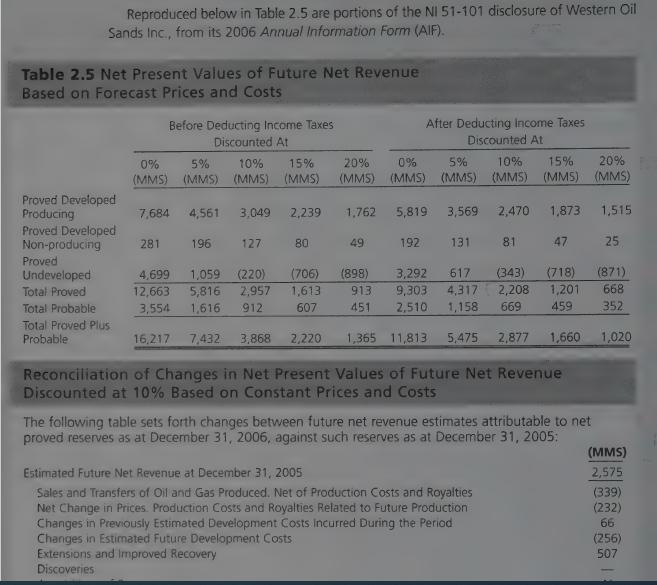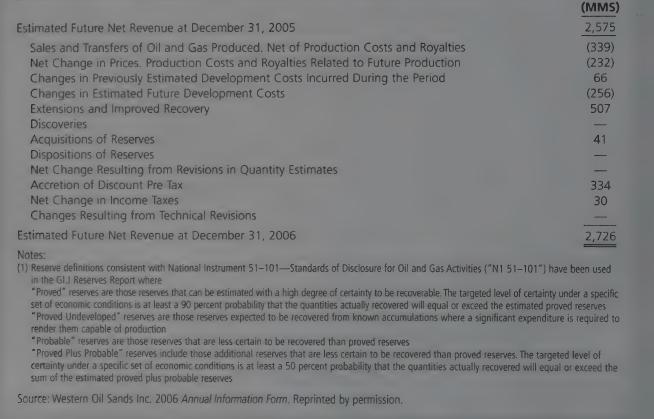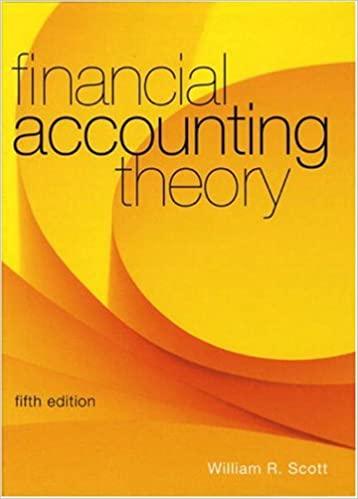National Instrument 51-101 of the Canadian Securities Administrators, effective September 30, 2003, lays down disclosure requirements for
Question:
National Instrument 51-101 of the Canadian Securities Administrators, effective September 30, 2003, lays down disclosure requirements for Canadian oil and gas firms. These requirements include:
Proved reserve quantities, defined as reserves that can be estimated with a high degree of certainty (operationalized as at least 90% probability) to be recoverable.
Probable reserve quantities, defined as additional reserves such that there is at least a 50% probability that the amounts actually recovered will exceed the sum of estimated proved and probable reserves.
Future net revenues from proved reserves and changes therein, discounted at 10% and undiscounted, using i) year-end prices and costs ii) forecasted prices and costs Future net revenues from probable reserves, discounted at 5%, 10%, 15%, and 20%, and undiscounted, using forecasted prices and costs. In addition, reserves data must be verified by an independent qualified reserves evalu- ator or auditor and reviewed by the board of directors.

 Required
Required
a. Evaluate the relevance of National Instrument 51-101 disclosures in comparison to those of SFAS In your answer, include consideration of whether or not discounting expected future receipts at various rates (rather than at 10% as per SFAS 69) adds to relevance.
b. Evaluate the reliability of National Instrument 51-101 disclosures in comparison to those of SFAS 69
c. In its AIF, Western Oil Sands states "The estimated future net revenues contained in the following tables do not necessarily represent the fair market value of the Corporation's reserves. There is no assurance that the forecast price and cost assump- tions contained in the... reserves report will be attained and variances could be mate- rial." Give reasons why the company gives this disclaimer.
Step by Step Answer:






